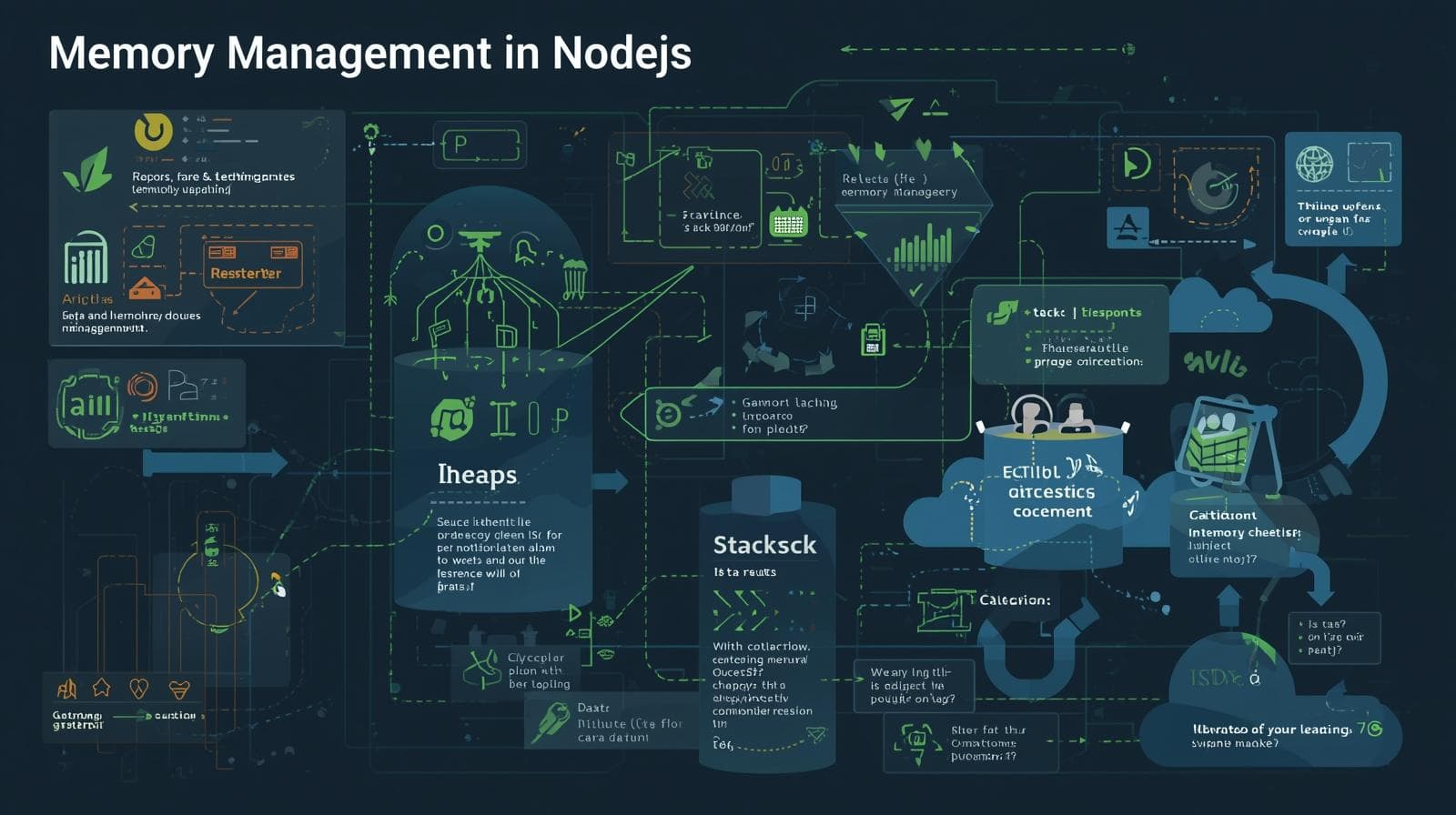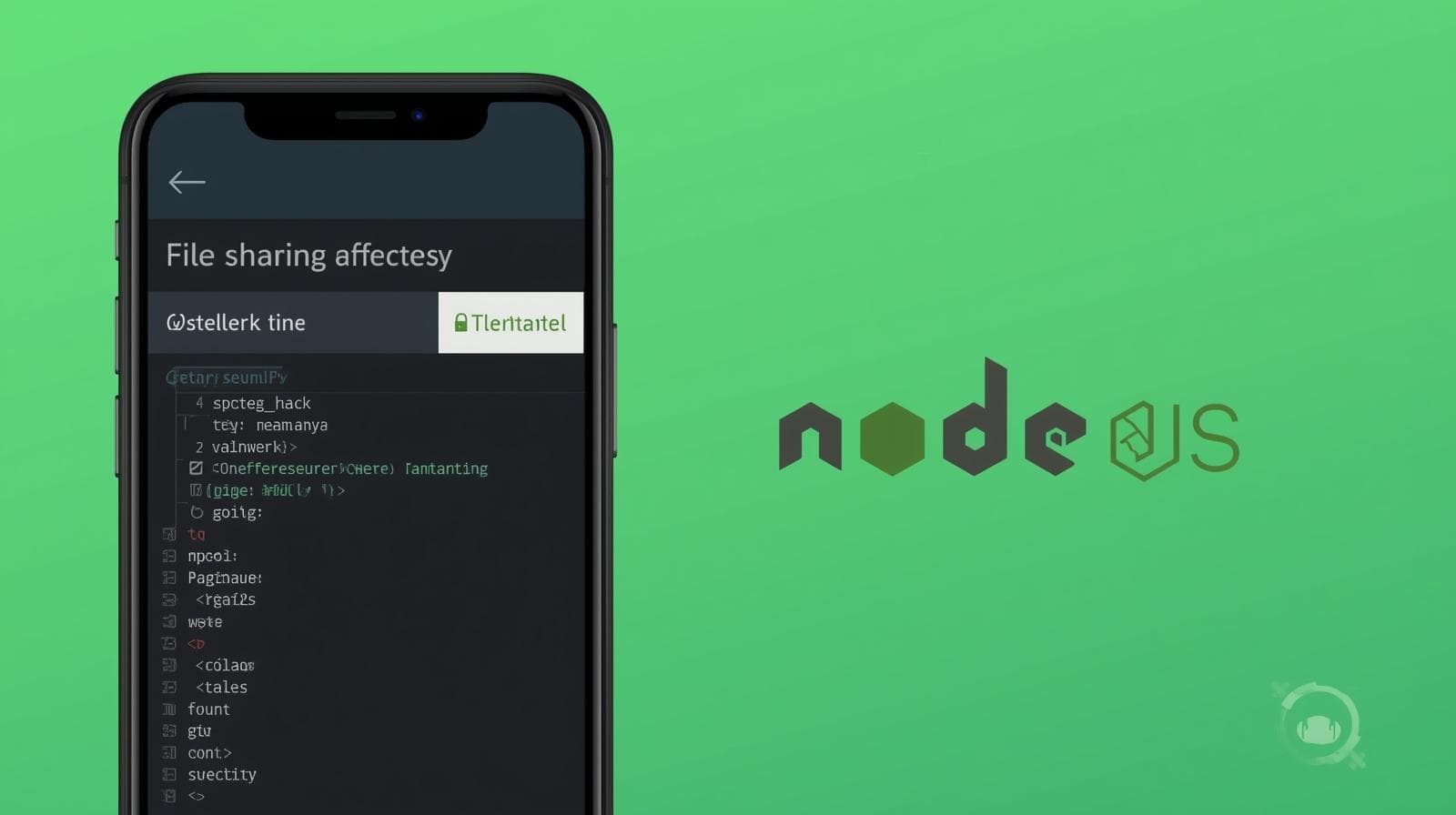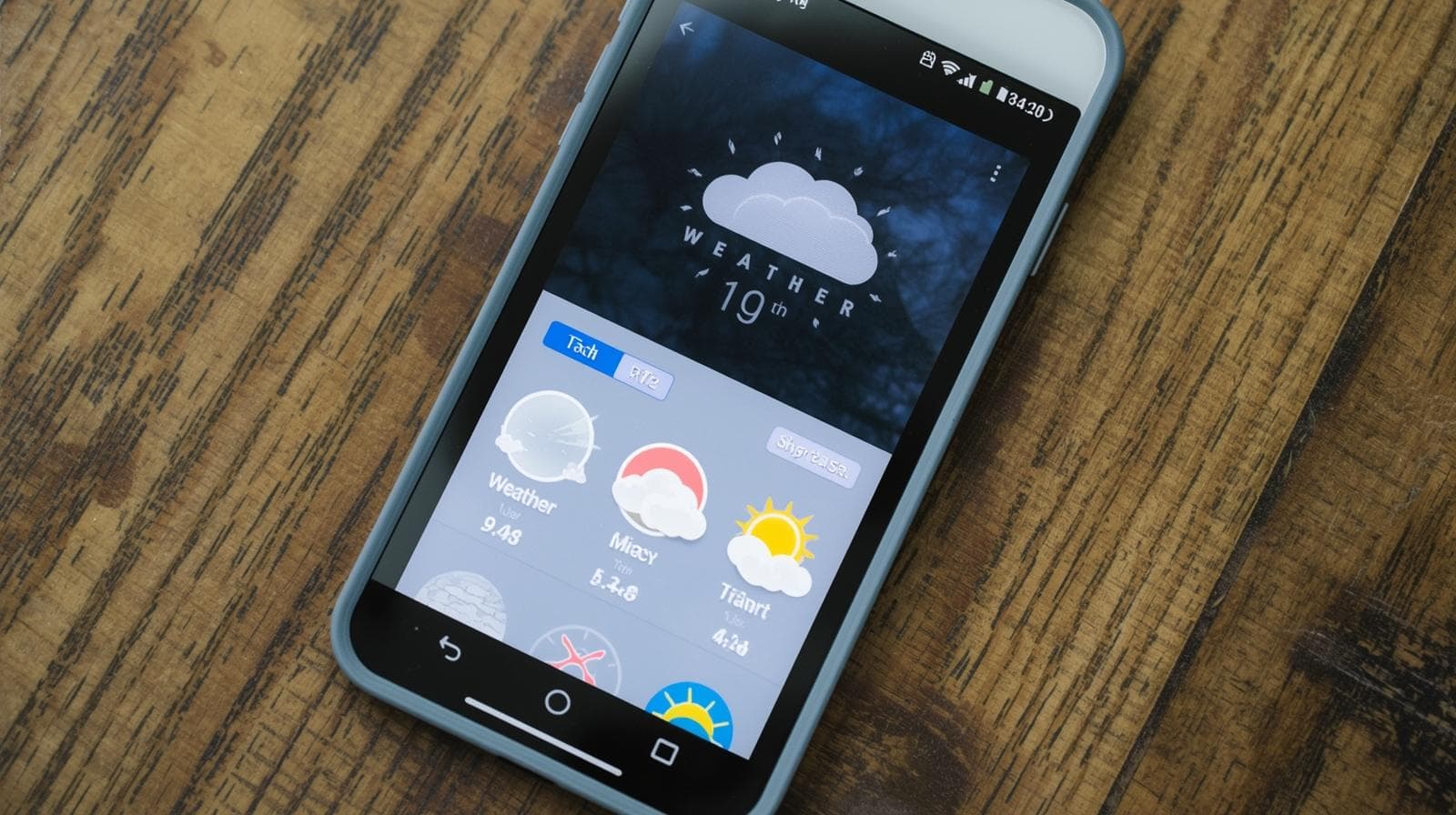Database Connection Pooling in Node.js: A Deep Dive for Scalable Apps

Master Database Connection Pooling in Node.js. Learn what it is, why it's crucial for performance, how to implement it with and mysql2, explore best practices, and avoid common pitfalls. Scale your applications efficiently.

Database Connection Pooling in Node.js: A Deep Dive for Scalable Apps
Database Connection Pooling in Node.js: The Secret Sauce for Scalable Applications
If you've ever built a Node.js application that talks to a database, you've probably heard the term "connection pooling" thrown around. It sounds like one of those complex, backend-engineering concepts that you can maybe ignore when you're just starting out. But here's the truth: understanding and correctly implementing connection pooling is one of the single biggest leaps you can make in taking your application from a simple prototype to a robust, production-ready system capable of handling real traffic.
So, what exactly is this "pool," and why is it so critical? In this deep dive, we're going to demystify database connection pooling in Node.js. We'll start from the absolute fundamentals, walk through practical code examples with popular databases, discuss best practices, and answer common questions. By the end, you'll not only know how to use it but also why it works, empowering you to build faster and more resilient applications.
The Problem: Why Do We Need a "Pool" in the First Place?
Let's set the stage. Imagine your Node.js application, a sleek Express server, needs to fetch user data from a PostgreSQL database for every API request it receives.
The Naive Approach: One Connection Per Request
The most straightforward way to handle this is to open a new database connection for every single incoming request, run the query, and then close the connection.
javascript
// A simplified, naive example (DO NOT USE IN PRODUCTION)
app.get('/user/:id', async (req, res) => {
const client = new Client({ /* your database config */ });
try {
await client.connect(); // Step 1: Connect
const user = await client.query('SELECT * FROM users WHERE id = $1', [req.params.id]); // Step 2: Query
res.json(user.rows[0]);
} catch (err) {
res.status(500).json({ error: 'Something went wrong!' });
} finally {
await client.end(); // Step 3: Disconnect
}
});This seems logical, right? But let's break down what's happening under the hood:
Connect: Establishing a connection to the database is not a free operation. It's a network handshake that involves authentication, setting up a TLS session (if using SSL), and allocating resources on both the application and database servers. This can take tens or even hundreds of milliseconds.
Query: The actual query execution is fast.
Disconnect: Closing the connection tears down everything that was just set up, and the database server has to clean up the resources.
Now, imagine your app gets 100 simultaneous requests. You just created 100 separate connections in a very short span. At 1000 requests, you're hammering your database with a thousand connection setups and teardowns.
The Consequences:
Performance Bottleneck: The majority of the request time is spent just setting up and tearing down connections, not on the actual data retrieval.
High Latency: Your users experience slow response times.
Database Server Overload: Your database CPU and memory are wasted on connection management instead of executing queries. This can easily lead to a full meltdown.
This is where connection pooling comes to the rescue.
What is Database Connection Pooling?
Think of a connection pool as a cache or a collection of pre-established, reusable database connections.
Instead of creating a new connection for every request, your application asks a "pool manager" for a connection. The pool manager provides an existing, idle connection from the pool. Your application uses this connection to execute its queries and then releases it back to the pool for other requests to use. The connection itself remains open and healthy.
It's like having a team of taxi drivers on standby at a taxi rank. When a customer (your API request) arrives, they don't wait for a new taxi to be built and delivered; they just get the next available taxi from the rank. After the trip, the taxi returns to the rank, ready for the next customer. This is infinitely more efficient than manufacturing a new car for every single journey.
The Key Components of a Connection Pool
Idle Connections: Connections that are open and available for use.
Active Connections: Connections that are currently checked out and being used by the application.
Pool Manager: The logic that creates, destroys, and manages the lifecycle of the connections.
Configuration Parameters: Settings like
max(maximum connections),min(minimum connections),idleTimeoutMillis(how long an idle connection can live), etc.
Implementing Connection Pooling in Node.js: Hands-On Examples
Let's look at how this is implemented with two of the most common databases in the Node.js ecosystem: PostgreSQL and MySQL.
Example 1: Connection Pooling with PostgreSQL using pg (node-postgres)
The pg library has excellent, built-in support for connection pooling.
First, install the library:
bash
npm install pgNow, let's set up a pool and use it in an Express application.
javascript
// db/pool.js - Configure your pool
const { Pool } = require('pg');
// Create a new pool instance with your configuration
const pool = new Pool({
user: 'your_username',
host: 'localhost',
database: 'your_database',
password: 'your_password',
port: 5432,
// Pool-specific configuration
max: 20, // maximum number of clients in the pool
idleTimeoutMillis: 30000, // how long a client is allowed to remain idle before being closed
connectionTimeoutMillis: 2000, // how long to wait for a connection from the pool
maxUses: 7500, // close a connection after it has been used this many times (optional, for resilience)
});
// Listen for pool events (optional but good for debugging)
pool.on('connect', (client) => {
console.log('Client connected to the database');
});
pool.on('error', (err, client) => {
console.error('Unexpected error on idle client', err);
});
module.exports = { pool };javascript
// app.js - Use the pool in your routes
const express = require('express');
const { pool } = require('./db/pool');
const app = express();
app.use(express.json());
// A healthy route using the connection pool
app.get('/user/:id', async (req, res) => {
try {
// Acquire a connection from the pool
const { rows } = await pool.query('SELECT * FROM users WHERE id = $1', [req.params.id]);
// Note: We didn't have to manually connect or release the client!
// The pool.query method handles acquiring and releasing for us.
if (rows.length === 0) {
return res.status(404).json({ error: 'User not found' });
}
res.json(rows[0]);
} catch (err) {
console.error('Database query error:', err);
res.status(500).json({ error: 'Internal server error' });
}
});
app.listen(3000, () => console.log('Server running on port 3000'));The magic here is pool.query. This method is a shortcut that:
Acquires an idle connection from the pool.
Executes the query on that connection.
Releases the connection back to the pool.
Returns the result.
For transactions, where you need to run multiple queries on the same connection, you would manually acquire and release a client:
javascript
app.post('/transfer-funds', async (req, res) => {
const { fromId, toId, amount } = req.body;
const client = await pool.connect(); // Manually acquire a client
try {
await client.query('BEGIN'); // Start transaction
const withdraw = await client.query(
'UPDATE accounts SET balance = balance - $1 WHERE id = $2 AND balance >= $1',
[amount, fromId]
);
if (withdraw.rowCount !== 1) {
throw new Error('Insufficient funds or account not found');
}
const deposit = await client.query(
'UPDATE accounts SET balance = balance + $1 WHERE id = $2',
[amount, toId]
);
await client.query('COMMIT'); // Commit transaction
res.json({ message: 'Transfer successful' });
} catch (err) {
await client.query('ROLLBACK'); // Rollback on error
res.status(400).json({ error: err.message });
} finally {
client.release(); // CRITICAL: Always release the client back to the pool!
}
});Example 2: Connection Pooling with MySQL using mysql2
The mysql2 library is a high-performance successor to mysql and provides promise-based support and connection pooling.
Install it:
bash
npm install mysql2Setting up a pool is very similar:
javascript
// db/pool.js
const mysql = require('mysql2/promise'); // Note the '/promise'
// Create the connection pool
const pool = mysql.createPool({
host: 'localhost',
user: 'your_username',
database: 'your_database',
password: 'your_password',
waitForConnections: true,
connectionLimit: 20, // Same as 'max' in pg
queueLimit: 0, // Maximum number of waiting connection requests (0 = unlimited)
idleTimeout: 60000, // 60 seconds
});
module.exports = pool;javascript
// app.js
const express = require('express');
const pool = require('./db/pool');
const app = express();
app.use(express.json());
app.get('/user/:id', async (req, res) => {
try {
// mysql2 also provides a handy .execute for prepared statements
const [rows] = await pool.execute('SELECT * FROM users WHERE id = ?', [req.params.id]);
if (rows.length === 0) {
return res.status(404).json({ error: 'User not found' });
}
res.json(rows[0]);
} catch (err) {
console.error('Database query error:', err);
res.status(500).json({ error: 'Internal server error' });
}
});
app.listen(3000, () => console.log('Server running on port 3000'));The principles are identical. The pool manages the connections, and you simply execute or query against it.
Real-World Use Cases and The Impact of Pooling
Connection pooling isn't just an academic concept; it's a necessity in production environments.
Web APIs & Microservices: Any RESTful API or GraphQL endpoint that serves data from a database is the primary use case. It ensures low-latency responses under concurrent load.
Serverless Functions (Lambda): In a serverless environment, functions are stateless and short-lived. Without pooling, every function invocation would create a new connection, leading to catastrophic database overload. By using a pool outside the function handler, you can reuse connections across warm invocations.
Data-Intensive Background Jobs: If you have worker processes that crunch data from the database, pooling prevents them from creating a denial-of-service attack on your own database.
The impact is measurable: We've seen applications reduce their average response time from ~200ms to under ~20ms just by implementing a proper connection pool, as the connection setup overhead (which was ~180ms) was virtually eliminated.
Best Practices and Configuration Tuning
Setting up a pool is easy, but tuning it is an art. Here are some key best practices.
Choose the Right Pool Size (
maxconnections):The Goldilocks Principle: Not too big, not too small.
Too Big: If your pool size is larger than your database's
max_connectionssetting, you'll cause errors. Even if it's within the limit, an overly large pool can overwhelm the database with concurrent queries, thrashing its CPU and memory. A common starting point is(Number of Cores * 2) + Number of SSD Spindles... but a simpler rule of thumb is to start between 10 and 25 and load test.Too Small: Requests will start queuing, waiting for a connection to become available, increasing latency. You'll see timeouts.
Always Release Connections: This is the most common pitfall. If you manually acquire a client (like in our transaction example), you must release it in a
finallyblock. Otherwise, you have a "connection leak," and your pool will eventually run out of connections.Use a Health Check / Keep-Alive: Some pools and databases support sending a periodic ping (e.g.,
SELECT 1) to keep idle connections alive and detect broken ones. This is crucial in environments with stateful firewalls or proxies that kill long-lived idle connections.Handle Pool Errors Gracefully: Listen for
errorevents on the pool. A common issue is when the database becomes unreachable. Your application should handle this gracefully, perhaps by entering a degraded state or retrying, instead of crashing.Set Timeouts: Always configure
connectionTimeoutMillis(how long to wait for a connection from the pool) andidleTimeoutMillis(how long an idle connection can live). This prevents resource starvation and keeps your pool healthy.Environment-Based Configuration: Your local development pool size will be very different from your production pool size. Use environment variables to manage these configurations.
Mastering these concepts is what separates junior developers from seniors. If you're looking to solidify your understanding of backend systems and build production-grade applications, our structured curriculum at CoderCrafter is designed for exactly that. To learn professional software development courses such as Python Programming, Full Stack Development, and MERN Stack, visit and enroll today at codercrafter.in.
Frequently Asked Questions (FAQs)
Q1: Can I use a single connection for my entire application?
Technically, yes, but it's a terrible idea for any concurrent application. Database connections are stateful and not thread-safe. If multiple requests try to use the same connection simultaneously, their queries will get interleaved, leading to corrupted data and errors. The pool provides a safe, managed way to share connections.
Q2: What happens if the pool runs out of connections?
This depends on the configuration. In the pg pool, if max is 20 and all 20 are active, the next request will wait for connectionTimeoutMillis (we set it to 2 seconds) for a connection to be released. If it times out, it will throw an error. In mysql2, the queueLimit option defines how many requests can wait in the queue.
Q3: How does pooling work with serverless functions?
This is a tricky one. Since serverless functions can be spun up and down, you must create the pool outside the function handler. This allows the pool to be reused across "warm" function invocations. However, you must be cautious, as a large number of concurrent cold starts could still create many pools. Using an external connection pooling service like PgBouncer is often recommended for heavy serverless use.
Q4: Is connection pooling only for relational databases?
No! The concept is universal. Many NoSQL databases and other services (like Redis, Elasticsearch) also benefit from connection pooling, and their clients often have built-in pooling mechanisms.
Q5: What's the difference between PgBouncer and the pg pool?
PgBouncer is a dedicated, external connection pooler that sits between your application and the PostgreSQL database. It can be more efficient and allows you to pool connections across multiple application servers. The pool in the pg library is an in-app pool. For most small-to-medium applications, the in-app pool is sufficient. For very high-scale systems, PgBouncer is often used in conjunction with in-app pools.
Conclusion
Database connection pooling is not an optional optimization; it's a fundamental pattern for building efficient, scalable data-driven applications in Node.js. It dramatically reduces latency, conserves valuable database resources, and provides a robust mechanism for handling concurrent traffic.
We've journeyed from understanding the problem it solves, through its core concepts, and into practical implementation with both PostgreSQL and MySQL. We've covered critical best practices to avoid common pitfalls and answered frequent questions.
By internalizing these concepts, you are now equipped to build applications that are not just functional, but performant and resilient under load. This is the kind of professional-grade engineering mindset we instill in our students at CoderCrafter. If you're ready to take the next step in your software development career and master the tools and patterns that power the modern web, our project-based courses are the perfect launchpad. To learn professional software development courses such as Python Programming, Full Stack Development, and MERN Stack, visit and enroll today at codercrafter.in.








